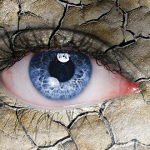Dr. Mariette’s investigations in the last decade have elucidated several possible targets for therapeutics in SS. Interferon type 1 or 2; IL-21; activation of B cells; and BAFF make up what he calls “the axis of pathogenesis” and should be explored as biologics gain traction in treating other autoimmune diseases. Because lymphomas in SS arise from autoimmune B cells, an efficient immunosuppressive therapy should decrease the risk of lymphoma in SS, Dr. Mariette believes. Based on a 2007 study validating the safety and tolerance of rituximab in Sjögren’s, Dr. Mariette declares, “Now is the time for randomized controlled trials of rituximab” in Sjögren’s.1
To efficiently conduct such studies requires new tools for measuring disease activity, Dr. Mariette says. He was one of three co-conveners of a European League Against Rheumatism (EULAR) initiative to develop a disease activity index for SS. The EULAR Sjögren’s Syndrome Disease Activity Index (ESSDAI) has now been designed and published and will proceed to validation in the near future. In the meantime, Dr. Mariette strongly believes that researchers in Sjögren’s and lupus should be collaborating. As demonstrated from this panel of presenters, international multidisciplinary collaborations are the key to discovering more definitive early diagnostic indicators and treatment protocols—and that is good news for the approximately 4 million Americans with the condition.
Gretchen Henkel is a medical journalist based in California.

